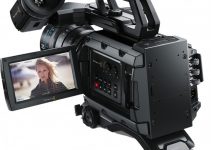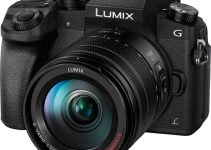Compact cinema cameras are all the rage. Blackmagic was quick to the market with their Pocket series and now have the impressive Pocket Cinema Camera 6K in their portfolio. Interestingly, RED is joining the community with the (relatively) affordable KOMODO 6K. Considering the form factors and sensors/resolution are similar it is an intriguing comparison.
Filmmaker Joey Helms was joined by cinematographer Jesse Schroeder to pit these two compact cinema cameras against each other. Both their rigs end up looking quite similar in size, so it does come down to whether the specific features or image quality make a difference to you. Or even simply whether you need to grow your budget to go for a RED.
Kicking things off is a short video that cuts freely between both as a blind test. In the real-world run-and-gun sequence on YouTube it was practically impossible to tell the difference.
Maybe rewatching it a couple of times you could pick out the differences, but I don’t think it was anything meaningful. That alone should be enough for most people to make a decision on whether the Pocket 6K is good enough. It is good enough for most people.
We got to see some footage first, but now for the specs. Max resolution is matched at 6K and both even hit greater than 24p when shooting open gate. Blackmagic pulls ahead though with 50 fps here while the KOMODO only reaches 40 fps. However, RED has a huge advantage in using a global shutter that completely eliminates the rolling shutter effect.
Both cameras have their own proprietary raw formats with various quality/compression options and both offer ProRes. Unfortunately, neither can do any sort of simultaneous recording, so it’s a one or the other deal. Interestingly, in ProRes the KOMODO is limited to 4K while the Pocket can do full 6K.
Price is the shortest comparison. The KOMODO costs $6,000 at launch and the Pocket 6K seems like a steal at just $2,000. Lens mount is going to be an odd point. The Pocket 6K has a common Canon EF mount and has options for being converted to PL.
The KOMODO on the other hand took a different approach and is using the mirrorless Canon RF mount. RED seems to be more versatile here as the RF mount supports EF-mount adapters (including ones with built-in ND filters) as well as tons of other adapters.
Neither camera has built-in NDs unfortunately and both support CFast 2.0 for media. The Pocket also has an SD slot, but it won’t support top-end codecs and frame rates. Another option for Blackmagic is to output to an external SSD via USB-C.
Battery is a separator, as the Pocket 6K sticks with the common but tiny Canon LP-E6 and the KOMODO offers two Canon BP slots. This means the RED can hot swap batteries for unlimited run times and benefit generally from larger battery packs for longer run times.
Blackmagic takes over on audio. It has a 3.5mm mic/line input and a mini-XLR input with phantom power. Hard to beat true XLR support in such a small body. The KOMODO only has a 3.5mm input.
Both being small cameras the interface is a very important consideration. The RED takes a streamlined approach on its smaller body with only 5 buttons and a 2.9” touchscreen plus a Wi-Fi app for remote control.
The Pocket 6K destroys here with 15 buttons, a large 5” touchscreen, and a Bluetooth app.
Going back to formats, both have raw, but not all raw is equal. REDRAW offers 16-bit color while Blackmagic RAW is limited to 12-bit in the Pocket 6K. This is important when we consider dynamic range, as the KOMODO offers ~16 stops which is a significant advantage over the Pocket’s 13 stops.
Autofocus isn’t even normally in the conversation, but the KOMODO 6K has a phase-detect system that will likely get better over time. The Pocket 6K has been out for a lot longer and that autofocus doesn’t seem to be going anywhere worthwhile.
And we get to have a little more fun with some carefully lit sets and artificial lighting. Looking at them side by side in the spec ad they shot shows that the differences are hard to see on screen. The RED KOMODO is a better camera for a lot of reasons, and I think the mount with those adapters is a better solution since you can add ND there.
With the batteries and smaller form factor, the KOMODO is nice. Is it worth three times the price of the Pocket 6K? I’m not sure of that. If you don’t have the money to definitely drop on the KOMODO, the Pocket 6K will keep that cash in your pocket and maybe invest in other gear or your next project.
Which camera would you pick?
[source: Joey Helms]
Order Links:
- RED DIGITAL CINEMA KOMODO 6K Digital Cinema Camera (B&H)
- Blackmagic Design Pocket Cinema Camera 6K (B&H, Amazon)
Disclaimer: As an Amazon Associate partner and participant in B&H and Adorama Affiliate programmes, we earn a small comission from each purchase made through the affiliate links listed above at no additional cost to you.
Claim your copy of DAVINCI RESOLVE - SIMPLIFIED COURSE with 50% off! Get Instant Access!





